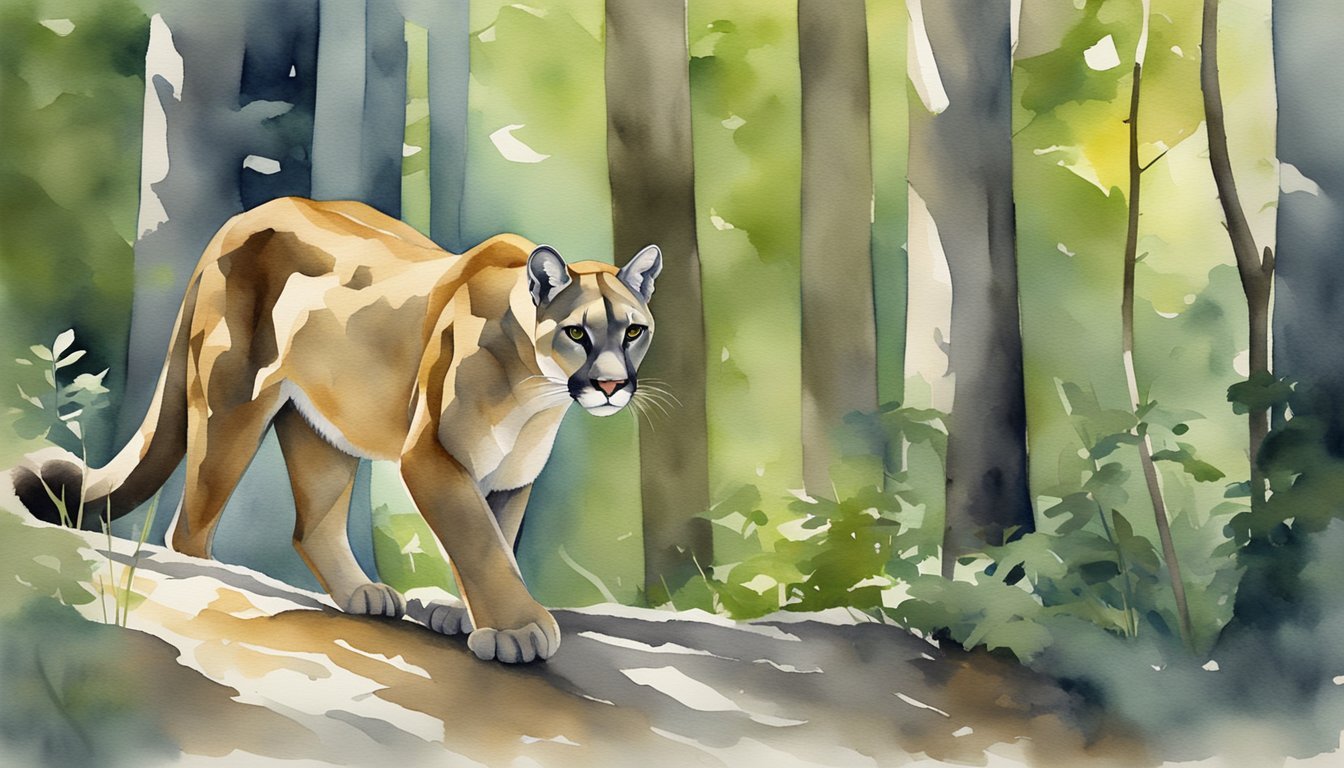Cougar Fundamentals
Exploring the fundamentals of cougars involves looking closely at their physical characteristics, taxonomic placement, and the diverse environments they inhabit.
Physical Description
The cougar, a large cat known by many names such as mountain lion, puma, or catamount, features a slender body covered in a tan to reddish coat. Adult cougars typically have a body length of about 3.5 to 6.5 feet with a long tail adding another 23.5 to 33.5 inches. This tail assists in balance and agility, especially while hunting. The weight of cougars varies greatly with geography, ranging from 75 to 250 pounds.
Classification and Nomenclature
Cougars, scientifically referred to as Puma concolor, are part of the Felidae family, making them relatives of other large cats like jaguars. Their classification within the mammalian carnivore order Carnivora speaks to their predatory lifestyle. Unlike other big cats, they do not roar, as they belong to the subfamily Felinae, which include species that possess a less developed vocal structure. For further understanding about their classification, refer to the detailed descriptions on Western Wildlife Outreach.
Habitats and Distribution
These versatile carnivores inhabit a wide range of ecosystems, from dense forests to arid deserts. Found primarily in the Americas, cougars adapt remarkably well to different terrains, making them a widespread terrestrial mammal. They maintain large territories essential for hunting and are solitary except during mating or a mother raising her kittens. Insights into the diverse environments cougars call home can be gained from resources like Forest Wildlife.
Cougar Ecology and Behavior

Cougars, also known as mountain lions or pumas, are fascinating and adaptable predators native to the Americas. Their ecological role is pivotal, as they influence the distribution and population of prey species and maintain the health of ecosystems.
Cougar Diet and Prey
Cougars are skilled ambush predators, relying on a diet primarily composed of mammals. While deer are their preferred prey in North America, they also hunt smaller species such as coyotes, raccoons, and rodents. Cougars adapt their hunting strategy based on the availability of prey across their habitats, which range from Canada to the southern Andes in South America.
Reproduction and Lifecycle
The lifecycle of a cougar begins with a gestation period of approximately 91 days. Female cougars may give birth to up to six cubs, although two to three is more common. Cubs are born blind and with a spotted coat, seeking refuge in dens for safety. The young will stay with their mother for up to two years before setting out to establish their own territories.
Conservation and Threats
Cougars, once found throughout most of the Western Hemisphere, have seen their range dramatically reduced due to habitat loss and fragmentation. While their conservation status is listed as least concerned on the IUCN Red List, regional populations continue to face threats, including conflicts with livestock and hunting pressures. Active conservation efforts are crucial to mitigate the challenges they face in both North and South America.

